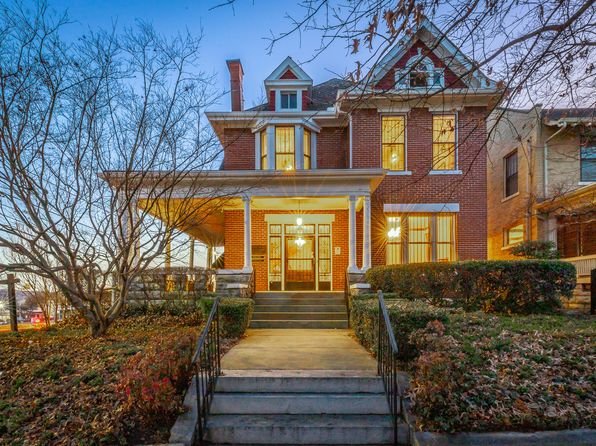THREATENED PLACES
Chattanooga has lost numerous historic and valuable buildings over the years, affecting the city's identity. Preserve Chattanooga aims to educate and persuade property owners to protect significant architectural heritage.
Medical Arts Building
-
Chattanooga’s Medical Arts Building first opened its doors in 1929. In late 2024, news began to unfold about a decision by First Presbyterian Church to demolish the structure which was listed on the National Register of Historic Places in 1979. Designed by Reuben Harrison Hunt, and financed by Adolph Ochs, demolition of the building will be the most significant loss to Chattanooga’s architectural heritage in recent years.
-
Read our Special Edition e-newsletter that includes a video on the building’s history HERE.
-
First Presbyterian Church leadership states that the building is too expensive to renovate and cannot be reconfigured to suit their current needs. The proposal is to replace the 10-story building with a two-story structure and more parking. Church leadership must be convinced that demolition is simply not an option and that an alternative plan, which might include selling the structure, must be legitimately explored.
-
Concerned citizens can contact friends and family associated with First Presbyterian Church to discuss alternatives. People of influence are needed and rational proposals for rehabilitation need to be presented.
-
An independent grassroots movement has started an online petition. See the petition HERE.
Car Barns
-
Drury Hotels recently released a rendering for a new hotel to be built at 301 Market Street, the site of the former Sportsbarn fitness center. It is basically a replica of thenew hotel built near Hamilton Place Mall.
-
The structure was built in 1886 to serve as a mule and horse stable and is the only such structure remaining downtown. This building, along with two others on Market Street, offers a compelling story about the evolution of transportation in Chattanooga and American cities in general. It is highly unlikely that any other city has three structures in such proximity that tell the story of how transportation changed rapidly from horse and carriage to trolleys to motorized buses.
-
Preserve Chattanooga has contacted Drury Hotels Inc. and Drury Development Corporation requesting that the historic facades on Market and Broad Streets be preserved and integrated into the final design. We have also worked with local partners on influencing the project design. To date, Drury has been unwilling to have discussions with any organizations at the local level.
-
Contact Drury Development and let them know that they need to develop a design that respects Chattanooga history. Contact your City Council representative and ask them to see what the City can do to influence the design decision.
Chancellor’s House
-
The structure was demolished by the University of Tennessee Chattanooga in May 2025 to make way for an expansion to the Rollins School of Business.
-
Preserve Chattanooga contacted University leadership and met with concerned alumni and staff with no results. The Deconstruction Advisory Board attempted to salvage materials and was denied access.
-
Once known as the President's Home, located at 605 Oak Street, was the oldest remaining building built by the university. It served as the residence for numerous chancellors before being converted to offices in the 1970s. Watch a video about its history and walk through the building in this video.

Advocacy
Protecting Historic Places in Chattanooga
In Chattanooga, there are two primary ways to protect historic resources from being demolished or significantly altered:
The historic resource can be individually designated a Local Historic Landmark (LHL) or an entire neighborhood can be designated a Local Historic District (LHD). This process is outlined in Article II, Chapter 10 of the City Code. LHL’s and LHD’s are governed by design guidelines and reviewed by the Chattanooga Historic Zoning Commission. Chattanooga has four Local Historic Districts (Battery Place, Ferger Place, Fortwood, and St. Elmo) and one Local Historic Landmark (the Frank Lloyd Wright designed Shavin House).
A preservation easement (also known as a facade easement) is a voluntary legal agreement that can provide assurance that a historic property’s most important features will be preserved, even when changes in ownership occur. Certain tax benefits may result from donating a preservation easement on certified historic commercial structures. Preserve Chattanooga currently holds seven such easements.
Preserve Chattanooga’s vision for the community is to have every certified historic structure (National Register) designated as a Local Historic Landmark and every certified historic neighborhood designated a Local Historic District.
Speak Up for the Historic Preservation Fund! From unreleased funds from FY25 to being zeroed out in the President’s FY26 budget, the Historic Preservation Fund is under threat. Urge your members of Congress to do their part to preserve the full history of our nation and the many important stories that contribute to the American experience.
How does this impact Tennessee?
Example Project: Collins Chapel Christian Methodist Episcopal Church
Historic Preservation Fund Program: African American Civil Rights Grant
Historic Collins Chapel Church in Memphis, Tennessee, represents the oldest Black congregation in continuous existence, which first gathered together beginning in 1841. The congregation purchased the lot where the church building now stands in 1859. It was first a wooden structure but was bricked over for safety after the Memphis Massacre of 1866. Historic Collins Chapel Church has continuously been at the center of African American culture and civil rights in Memphis.
Learn more about projects nationwide that receive critical historic preservation funding HERE.




